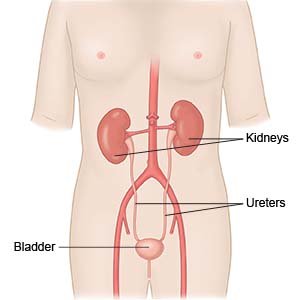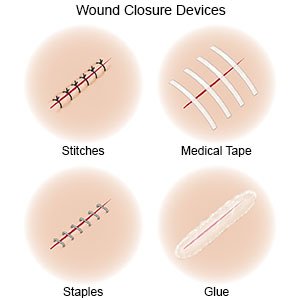Robot Assisted Nephrectomy
Medically reviewed by Drugs.com. Last updated on Aug 4, 2025.
What do I need to know about robot-assisted nephrectomy (RAN)?
RAN is surgery to remove part or all of your kidney through small incisions in your abdomen. RAN is done with a machine that is controlled by your surgeon. The machine has mechanical arms that use small tools to remove your kidney.
 |
How do I prepare for RAN?
- Your surgeon will tell you how to prepare. You may be told not to eat or drink after midnight on the day of your surgery. Arrange to have someone drive you home after you are discharged.
- Tell your surgeon about all your current medicines. Your surgeon will tell you if you need to start or stop taking any medicine for the surgery, and when to do so.
- Tell your surgeon about any allergies you have, including to medicines, anesthesia, stainless steel, nickel, or titanium.
- Your surgeon will tell you if you need tests before your surgery, and when to have them.
Related medications
What will happen during RAN?
You may have a radical (total) or partial nephrectomy. For a radical nephrectomy, your surgeon will remove the whole kidney. Your surgeon may also remove the ureter (tube that connects the kidney and the bladder), the adrenal gland, or lymph nodes. The adrenal gland sits on top of your kidney and produces hormones. For a partial nephrectomy, your surgeon will remove only the diseased parts of the kidney.
- You will be given general anesthesia to keep you asleep and pain free during surgery.
- Your surgeon will make 3 to 5 small incisions in your abdomen. Your abdomen will be filled with carbon dioxide to lift the muscles away from your organs. This helps your surgeon see your kidney better. Surgical tools are attached to arms of a robot. The robotic arms place a laparoscope and other tools inside your abdomen. A laparoscope is a long, thin tube with a light and camera on the end.
- Your surgeon will guide the robotic arms to remove the kidney through an incision in your abdomen.
- Your incisions will be closed with stitches or medical glue and covered with bandages.

What should I expect after RAN?
- You will be taken to a room to rest until you are fully awake. Healthcare providers will monitor you closely for any problems. Do not get out of bed until healthcare providers say it is okay. When providers see that you are okay, you will be taken to your hospital room. You may stay in the hospital for 2 to 3 days after surgery.
- Drains (thin rubber tubes) may be used to drain fluid from around your incision. The drains will be taken out when the surgery area stops draining.
- You may have a urinary catheter placed in your bladder. This is a thin, flexible tube inserted into the bladder to drain urine into a bag. Your surgeon will tell you when the catheter can be removed.
- You may feel pain around the incision sites. This is expected and should improve within a few weeks. You may be given medicine to help manage the pain.
- You will be helped to walk around after surgery. Movement will help prevent blood clots.
What are the risks of RAN?
You may get an infection or bleed more than expected. Your surgeon may need to change the surgery from laparoscopic to open. This means you will need 1 large incision. Nerves, blood vessels, muscles, or organs may be damaged. Urine may leak into surrounding tissues. This may occur if the urinary tract is damaged during surgery or the incision does not heal properly. The carbon dioxide used during surgery may cause shoulder or chest pain for 1 to 2 days after your surgery. Your other kidney may not work as well as it did before.
Care Agreement
You have the right to help plan your care. Learn about your health condition and how it may be treated. Discuss treatment options with your healthcare providers to decide what care you want to receive. You always have the right to refuse treatment. The above information is an educational aid only. It is not intended as medical advice for individual conditions or treatments. Talk to your doctor, nurse or pharmacist before following any medical regimen to see if it is safe and effective for you.© Copyright Merative 2025 Information is for End User's use only and may not be sold, redistributed or otherwise used for commercial purposes.
Further information
Always consult your healthcare provider to ensure the information displayed on this page applies to your personal circumstances.
